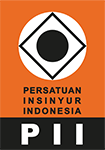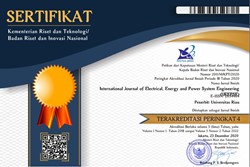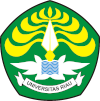Design of Health Monitoring Framework Model using oneM2M Standard
Abstract
The causes of traffic accidents are affected by human factors. Driver’s illness, such as exhaustion, drowsiness, and other chronic diseases, are the critical reasons for this. The creation of the Internet of Things (IoT) technology has tried to resolve these issues. The emphasis is on tracking and regulating driving safety and conditions. Unfortunately, there is no uniform IoT standard for this device. This study aims to provide a model for monitoring and handling the situation of drivers by combining the E-Health Tracking (EHM) and the Automotive Health and Safety (AHS) frameworks. The results of the system design are referred to as In-vehicle E-Health Monitoring (IV-EHM). The IV-EHM framework model analysis based on the oneM2M standard has been carried out. Based on the study, it can be said that the system has the specified requirements.
References
[1] G. Zhang, K. K. W. Yau, X. Zhang, dan Y. Li, “Traffic accidents involving fatigue driving and their extent of casualties,” Accid. Anal. Prev., 2016.
[2] Moradi, S. S. H. Nazari, dan K. Rahmani, “Sleepiness and the risk of road traffic accidents: A systematic review and meta-analysis of previous studies,” Transp. Res. Part F Traffic Psychol. Behav., vol. 65, pp. 620–629, August 2019.
[3] G. Vijay Kumar dan U. Kumar, “Profile of fatal road traffic accidents due to drunken driving,” Indian J. Forensic Med. Pathol., 2017.
[4] S. Wang, Y. Chen, J. Huang, Y. Zhou, dan Y. Lu, “Research on the Drunk Driving Traffic Accidents Based on Logistic Regression Model,” Open J. Appl. Sci., vol. 08, no. 11, pp. 487–494, 2018.
[5] M. E. H. Chowdhury et al., “Wearable Real-Time Heart Attack Detection and Warning System to Reduce Road Accidents,” Sensors, vol. 19, no. 12, pp. 2780, Jun 2019.
[6] K. Ullah, M. A. Shah, dan S. Zhang, “Effective Ways to use Internet of Things in the field of medical and smart health care,” in 2016 International Conference on Intelligent Systems Engineering (ICISE), pp. 372–379, 2016.
[7] D. Singh Rajput dan R. Gour, “An IoT Framework for Healthcare Monitoring Systems,” Int. J. Comput. Sci. Inf. Secur., vol. 14, no. 5, pp. 451–456, 2016.
[8] N. M. Kumar dan A. Dash, “The Internet of Things: An Opportunity for Transportation and Logistics,” in IEEE International Conference on Inventive Computing and Informatics (ICICI), 2017.
[9] X. Wang dan C. Xu, “Driver drowsiness detection based on non-intrusive metrics considering individual specifics,” Accid. Anal. Prev., vol. 95, pp. 350–357, Okt 2016.
[10] A. Hossan, F. Bin Kashem, M. M. Hasan, S. Naher, dan M. I. Rahman, “A smart system for driver’s fatigue detection, remote notification and semi-automatic parking of vehicles to prevent road accidents,” in 1st International Conference on Medical Engineering, Health Informatics and Technology, MediTec, 2017.
[11] X. Zhao, H. Zhu, X. Qian, dan C. Ge, “Design of Intelligent Drunk Driving Detection System Based on Internet of Things,” J. Internet Things, vol. 1, no. 2, pp. 55–62, 2019.
[12] H. Pranoto, A. M. Leman, D. Sukmajati, B. Hanum, dan I. Baba, “Drivers Drowsiness Detection with Speed Limiter Integrated Fatigue Analyzer (SLIFA) on Fuel Tank Truck,” Int. J. Integr. Eng., vol. 10, no. 2, August 2018.
[13] H. Pranoto, A. Adriansyah, D. Feriyanto, A. Wahab and S. Zakaria, “Propose Safety Engineering Concept Speed Limiter and Fatigue Control using SLIFA for Truck and Bus,” SINERGI, vol. 24, no. 3, pp. 237-244, October 2020
[14] R. K. Singh, A. Sarkar, dan C. S. Anoop, “A health monitoring system using multiple non-contact ECG sensors for automotive drivers,” in 2016 IEEE International Instrumentation and Measurement Technology Conference Proceedings, pp. 1–6, 2016.
[15] S. K. Datta, R. P. F. Da Costa, J. Harri, dan C. Bonnet, “Integrating connected vehicles in Internet of Things ecosystems: Challenges and solutions,” in 2016 IEEE 17th International Symposium on A World of Wireless, Mobile and Multimedia Networks (WoWMoM), pp. 1–6, 2016.
[16] R. Rathore dan C. Gau, “Integrating biometric sensors into automotive Internet of Things,” in Proceedings of 2014 International Conference on Cloud Computing and Internet of Things, pp. 178–181, 2014.
[17] A. Al-Fuqaha, M. Guizani, M. Mohammadi, M. Aledhari, dan M. Ayyash, “Internet of Things: A Survey on Enabling Technologies, Protocols, and Applications,” IEEE Commun. Surv. Tutorials, vol. 17, no. 4, pp. 2347–2376, 2015.
[18] F. Alsubaei, A. Abuhussein, dan S. Shiva, “An Overview of Enabling Technologies for the Internet of Things,” in Internet of Things A to Z, Hoboken, NJ, USA: John Wiley & Sons, Inc., pp. 77–112, 2018.
[19] “ISO/IEC/IEEE 42010: Conceptual Model,” ISO/IEC/IEEE 42010: Systems and software engineering, 2011. [Daring]. Tersedia pada: http://www.iso-architecture.org/42010/cm/. [Diakses: 19-Feb-2020].
[20] B. Verbrugge, “Best Practice, Model, Framework, Method, Guidance, Standard,” Van Haren Publishing, 2016. [Daring]. Tersedia pada: https://www.vanharen.net/blog/best-practice-model-framework-method-guidance-standard-towards-consistent-use-terminology/. [Diakses: 19-Feb-2020].
[21] A. Kotevski, N. Koceska, dan S. Koceski, “E-health monitoring system,” in Proceedings of the ICAIIT2016, 2016, pp. 259–265.
[22] P. Asare, D. Broman, E. a. Lee, M. Torngren, dan S. S. Sunder, “Cyber-Physical Systems - a Concept Map,” 2012. [Daring]. Tersedia pada: https://ptolemy.berkeley.edu/projects/cps/. [Diakses: 19-Feb-2020].
[23] OneM2M, “Functional Architecture,” TS-0001-V3.15.1, 2019.
[24] OneM2M, “Vehicular Domain Enablement,” TR-0026-V3.0.1, 2019.
[25] H. S. Oluwatosin, “Client-Server Model,” IOSR J. Comput. Eng., vol. 16, no. 1, hal. 57–71, 2014.
[26] A. Lele, “Cloud Computing. In Disruptive Technologies for the Militaries and Security,” Smart Innov. Syst. Technol., 2019.
[27] L. F. Bittencourt, M. M. Lopes, I. Petri, dan O. F. Rana, “Towards Virtual Machine Migration in Fog Computing,” in 2015 10th International Conference on P2P, Parallel, Grid, Cloud and Internet Computing (3PGCIC), pp. 1–8, 2015.
[28] A. Grygoruk dan J. Legierski, “IoT gateway – implementation proposal based on Arduino board,” in Proceedings of the 2016 Federated Conference on Computer Science and Information Systems, FedCSIS, pp. 1011–1014, 2016.
[29] P. P. Ray, “A survey on Internet of Things architectures,” J. King Saud Univ. - Comput. Inf. Sci., vol. 30, no. 3, pp. 291–319, Jul 2018.
[30] B. van Ginneken, “Fifty years of computer analysis in chest imaging: rule-based, machine learning, deep learning,” Radiol. Phys. Technol., vol. 10, no. 1, pp. 23–32, March 2017.



















